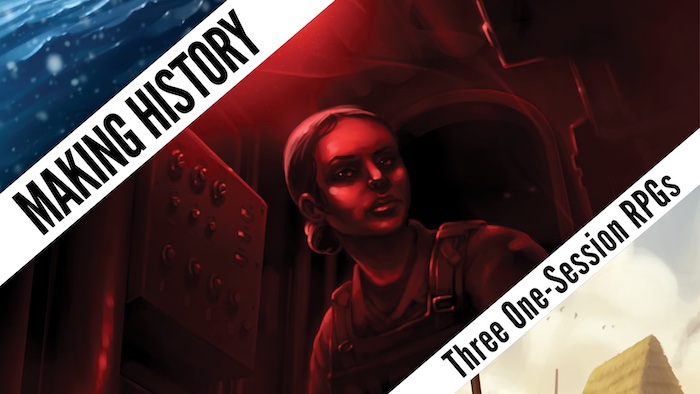Sukhothai, in what is today central Thailand, was the capital of a Medieval Thai kingdom in the 1200s and 1300s. The city was later abandoned, and by the mid-20th century, the ruins were totally overgrown by jungle. When archaeologists began to study the site, they were initially perplexed by an odd pyramid south of the city. It was stylistically unique, of a low-quality design, and did not fit the Theravada Buddhist religious pattern evident in the rest of Sukhothai. It was later determined the site was the home and worship site of a pre-Buddhist local deity that Sukhothai’s kings were perhaps a little ashamed of and were all too happy to abandon. The story of this pyramid and its forgotten god is easy to put into your fictional RPG campaign, whether in a vibrant capital city or an ancient ruin.
Also, if you stick around to the end of this post, I’ll be reviewing 13th Age, the popular D&D-like game from Pelgrane Press. I’m running a campaign of it and I’ve played in another, so I feel qualified to say: if you like D&D, but wish it were a little more streamlined, a little less clunky, and a little more narrative, 13th Age would be a good fit for your group.
This post is brought to you by beloved Patreon backer Robert Nichols. Thanks for helping keep the lights on! If you want to help keep this blog going alongside Robert, head over to the Patreon page – and thank you!
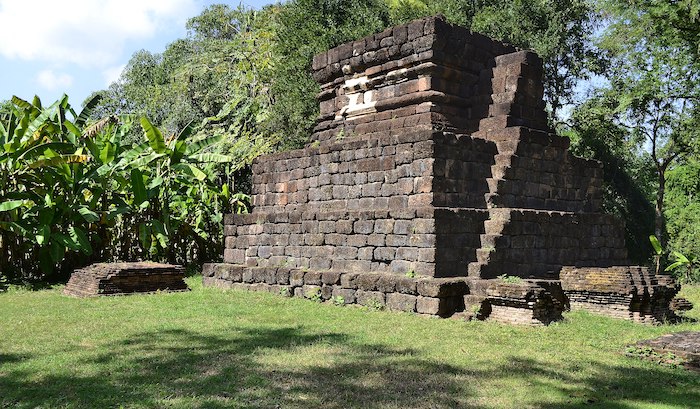
Sukhothai was founded as an outpost on the northern edge of the Khmer Empire. In the mid-1200s, two Thai chieftains seized the city from the Khmer. Some Thai people today point to this moment as the birth of the modern Thai nation. One of the chieftains, Si Indranit, became the new state’s first king, and the other – his brother – its second. The Thai kings didn’t remake Sukhothai so much as develop it in a manner different from that intended by its Khmer founders. While the old city was built strictly along north-south and east-west axes, the new construction and new roads were built along axes aligned with the landscape, and only roughly aligned with the cardinal directions. New earth ramparts and moats went up for defense, and some beautiful Khmer stone complexes were left outside the city walls. While the Khmer authorities were gone, Sukhothai still had a sizable Khmer population; one wonders what they thought of these changes.
The largest of the structures immediately built by Sukhothai’s new rulers was a weird stepped pyramid called today Wat Kon Laeng (‘Temple of Blocks of Laterite Stone’). It’s a quarter-mile outside the city’s south gate. It has four levels: unusual in Southeast Asian architecture, which prefers pyramids with odd, not even, numbers of steps. The levels don’t really look like they fit together. The lowest level is short, the middle two tall and steep-sided, and the top one tall and set back from the lower three. The top level is decorated, but the stones of the lower three levels are rough, almost haphazard. Stairs leading all the way to the top identify the pyramid as a site of activity: the builders wanted someone to easily reach the top of the pyramid.
Wat Kon Laeng is the likeliest candidate for a site known otherwise only from inscriptions: the honored lofty place where lived the Phi Muang, the protector of the land around Sukhothai and the most powerful of the local spirits. Inscriptions in Sukhothai indicate the king ensured the prosperity of the kingdom by giving the Phi Muang the proper offerings. If he failed to do so, the Phi Muang might grow angry and withdraw its support from Sukhothai. The Khmer – the city’s former rulers – didn’t honor the Phi Muang. In Medieval Southeast Asia, the belief was more associated with the Thai and culturally-related groups. One could easily see Sukhothai’s new kings concluding that their success was at least partly due to the Phi Muang withdrawing support from the Khmer for not honoring it. Best to show the spirit some respect lest it change sides again.
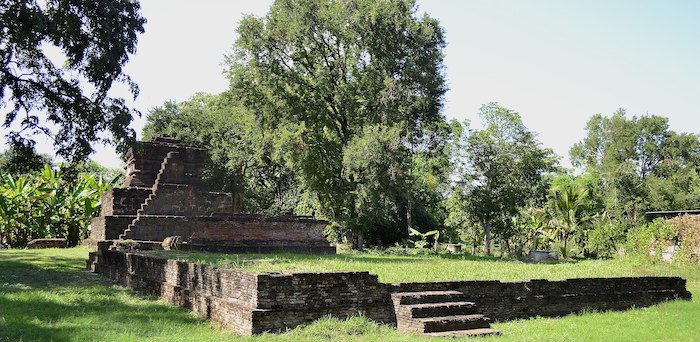
But the kings of Sukhothai seem to have been unenthusiastic in their worship of the Phi Muang. The same inscriptions that describe the importance of the king’s offerings to the god/spirit are mute as to what those offerings consist of. That’s because, across Medieval Southeast Asia, the Thai and culturally-related groups propitiated their Phi Muangs with animal sacrifice, often accompanied by the drinking of alcohol and/or blood. And for the Thai at Sukhothai, all those things were bad for high-status people. The ruling Thai were Theravada Buddhists – as are most Thai people today – so the killing of animals was a demeritorious act inappropriate for lofty people like kings. So too was the consumption of alcohol or blood. So what’s a king to do? You gotta keep the Phi Muang happy, lest it do unto you as it already did unto the Khmer. Yet you can’t accrue demerit by killing animals or drinking alcohol or blood. The initial compromise seems to have been to do whatever it took to keep the Phi Muang appeased, and just not talk about it very much.
Over time, the compromise evolved. By the late 1200s, inscriptions were referring to the Phi Muang by an alternative name that fit more comfortably into Buddhist orthodoxy. By the mid-1300s, the Phi Muang was officially no longer propitiated by offerings but by the merit the king had accrued in this and previous lives. Soon a pillared hall was built beside Wat Kon Laeng, incorporating the pyramid into a Buddhist monastery. In the late 1300s, an urn containing the ashes of the queen mother was placed atop the pyramid. The Phi Muang, an embarrassing relic of a less-pious era, had been safely defanged. The process repeated throughout the Thai-related world. At Luang Prabang in Laos, the local Phi Muang shrine was torn down and replaced with a Buddhist temple. The Phi Muang pyramid south of Ayutthaya, in Thailand, was converted into a Buddhist stupa. Today, Phi Muangs are seen as minor spirits of specific places – a far cry from being regional demigods.
The Kingdom of Sukhothai didn’t last much beyond this. Temples and monasteries proliferated. The head monk gained many of the powers of the monarchy. In 1438, Sukhothai was conquered by Ayutthaya, a Thai kingdom to the south. One might be inclined to blame the loss of the Phi Muang’s favor, were it not for the fact that Ayutthaya had maligned its own Phi Muang. Eventually the site was abandoned, trees grew up in the monasteries, and vines covered the temples. In 1833, a monk who would later become king of Thailand visited the site, found a historically-important inscription, and launched the study of Sukhothai as an archaeological site. Today the former city is a park full of cool monumental structures.
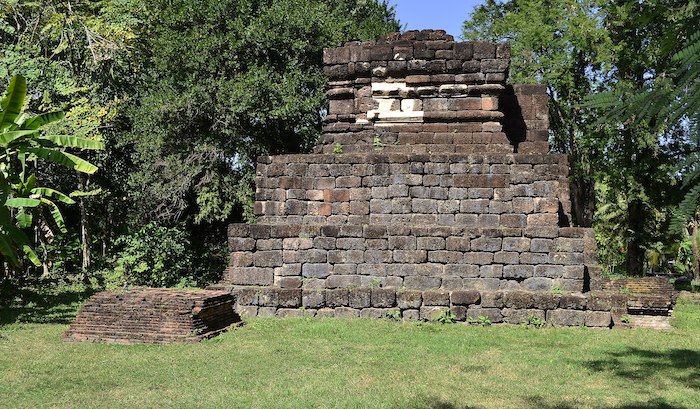
At your table, the abandoned Phi Muang living at Wat Kon Laeng is real easy to file the serial numbers off of and drop into your ongoing campaign. It works in both ruins and in vibrant capital cities.
In a ruin, you can come across this weird pyramid. It’s impressive, but slipshod. It looks different from the rest of the ruins. In a science fiction game, the pyramid is home to some manner of advanced or immortal being that once had a symbiotic relationship with the culture that built the ruins. It describes itself as the wronged party – that the culture forgot about it and moved on, leaving the being behind to rot. In truth, the benefits it demanded from its partners were pretty egregious, and when they stopped meeting its demands, it conspired with their mortal enemies. It would love to come with the PCs, if they would let it hitch a ride on their ship. In a fantasy game, you can leave the Phi Muang as a minor spirit and use the same narrative as in science fiction – save that it wants its legless, orblike corporeal body transported to a major temple. Either way, the being in the pyramid knows where all the good treasure was buried, so maybe it’s worth making a deal.
In an active capital city, the pyramid is the king’s shameful secret. The high priestess is outraged that the king feels it necessary to propitiate a being that needs him behave inappropriately. She hires the PCs to investigate the ‘mystery’ of who keeps killing animals atop the weird pyramid outside of town. Of course she knows full well who’s doing it. So do a lot of people who live near the pyramid and can’t help but be eyewitnesses. They will no more tell the PCs what they know than the priestess will. It shouldn’t take much work for the PCs to catch the animal sacrificer in the act – only to discover it’s the king! What do they do with this knowledge? Important in this short adventure is the question of whether the god of the pyramid is real and whether it matters. In real Sukhothai, it seems the consensus was that the Phi Muang was real, but that keeping it happy eventually stopped mattering. If your Phi Muang is vengeful, that might be different. Ditto if the high priestess has misjudged public sentiment, and rival nobles seize on the excuse that the Phi Muang needs to be propitiated, and try to seize the throne in order to do it.

Since this post is a little shorter than what I usually like to run, I’d like to include a review of 13th Age, the Dungeons & Dragons competitor from Pelgrane Press. The game is cowritten by two of the major designers on the 4th edition of D&D, and the authors are pretty clear that this is the game that 4e D&D would have been, had the suits at Hasbro not insisted it be a miniatures skirmish game.
13th Age is recognizably D&D. It’s arguably D&D for D&D veterans, people who’ve aged out of obsessing over developing the perfect character build or learning all the arbitrary details of the setting – but who still want to feel like they’re playing something like the same game they played when they first joined the hobby. 13th Age is a little more abstracted and a little more narrative than 3e, 4e, or 5e D&D. It’s a nice compromise. My roleplay-focused monk player, my tactics-focused ranger player, and my mechanics-averse druid player all enjoy the game, which is a hard balance to strike.
The best part of 13th Age is the classes. Each class operates fundamentally differently from every other. The barbarian and the fighter have totally different mechanics. So do the wizard and the sorcerer. This helps the characters feel unique – though because there’s not a huge amount of specialization within each class, if you have two members of the same class in a party, those characters can feel like they overlap a lot. (That’s intentional. Deciding how to specialize in your class is mechanical weight 13th Age doesn’t want to add.) Crucially, the classes are built at very different levels of complexity, and the book compares and contrasts them in one easy-to-understand section. If you don’t want to think too much about what you’re doing, the barbarian is smooth and has few decisions to make. If you want to sweat a lot of decisions, the wizard can get as messy as you like. The core book includes nine classes. The primary splatbook (13 True Ways) adds six more.
Combat plays decently quickly. Characters have a limited set of powers, which reduces analysis paralysis, though the powers are flashy and interesting enough that most players should feel like they get to make a meaningful choice every round. A clever mechanic called the Escalation Die keeps combat from dragging on too long. At the end of round 1, you put a d6 on the table with the 1 facing up, and all players add +1 to their attack rolls (which are d20-based) for the rest of the round. At the end of round 2, the escalation die moves to the 2, all players add a +2 to their attack rolls, and so forth all the way up to a whopping +6. It’s rare to see the escalation die get all the way to 6. The escalation die means fights start out seeming rough, but turn into a power fantasy by the end. Monsters all get something special to do mechanically, and fights are at their best when the party is facing three different kinds of monsters.
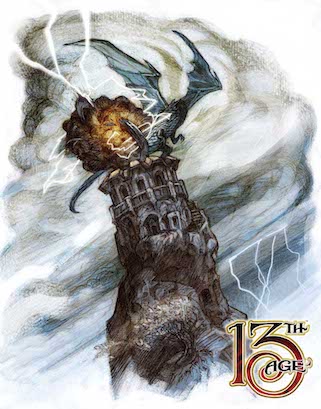
The primary narrative innovation in 13th Age is something called Relationship Dice, which relate to the game’s Icons. The game’s default setting, the Dragon Empire, is an intentionally not-super-fleshed-out world defined by thirteen major NPCs called Icons. They’re archetypal heroic fantasy NPCs, the folks who move and shake the setting: the Emperor, the Archmage, the Lich King, etc. Each player character has three points to assign to relationships (positive, negative, or ambiguous) with the Icons. For example, our druid has a two-point positive relationship with the High Druid and a one-point ambiguous relationship with the Dwarf King. At the start of each session, the players roll some dice related to their relationships, and based on the results the GM improvises some ways those relationships impact events during the session.
I’m not sold on relationship dice. They’re not as concrete as aspects and compels in FATE, my preferred narrative rules set. And it’s not always clear how to use the results. If I’ve prepared a dungeon crawl without any undead in it, it can be awkward trying to shoehorn in a result that says the monk’s relationship with the Lich King should come up this session. The book includes some advice for workarounds, including rolling the relationship dice at the end of the session so you can incorporate the results into next session’s prep, but it’s all still pretty nebulous. I’d prefer it if the relationship dice were either more concrete (a result of that means this specific thing shall occur) or fully loosey-goosey (roll relationship dice whenever you feel like it, and just go with your heart, man).
Nonetheless, the relationship dice accomplish something important I wish more RPGs would do: they force the players to write down on their character sheets what kinds of stories they want to tell at the table. A player who lists a negative relationship with the Orc Lord wants to kill orcs. A player who lists an ambiguous relationship with the Emperor wants to play politics. If no one picks a relationship with the Diabolist, the players probably aren’t super interested in stories with demons. It’s a good way to force players, who often aren’t entirely sure what they want, to reveal their preferences.
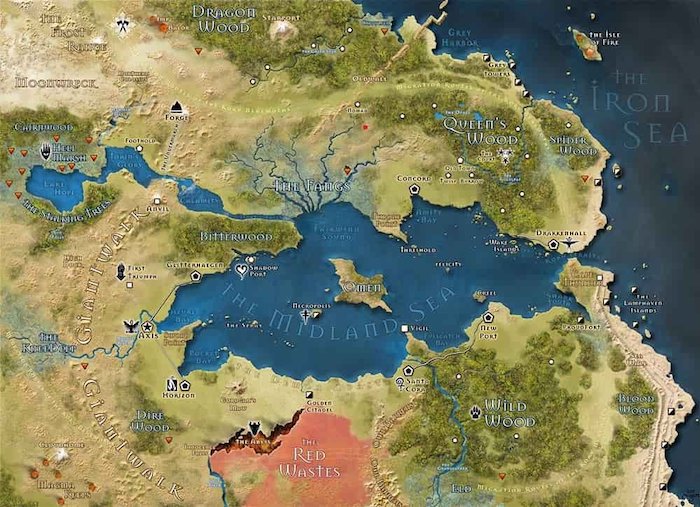
In summary, 13th Age is a good compromise for tables who’ve tired on D&D as a rules set, but still love D&D as a concept. It’s a good compromise for groups that can’t always agree on their preferred style of play. I can’t say it truly excels at any one thing, but it succeeds in keeping a variety of different kinds of people happy. My group enjoys it, and we’re going to keep playing it.
Check out my book Making History: Three One-Session RPGs! It’s three awesome historical one-shots with pregenerated characters and a very simple rules system designed specifically for that story. Norse Ivory is a game about heritage and faith in the Viking Age. A Killing in Cahokia is a murder mystery in the Native American temple-city of Cahokia. And Darken Ship is a horror-adventure starring junior sailors on a U.S. Navy warship who wake up one morning to discover they’re alone on a ship that should carry three thousand.
Sources:
Sukhothai: Its History, Culture, and Art by Betty Gosling (1991)
Households and Villages: The Political-Ritual Structures of Tai Communities by Nicola Tannenbaum (1992)







